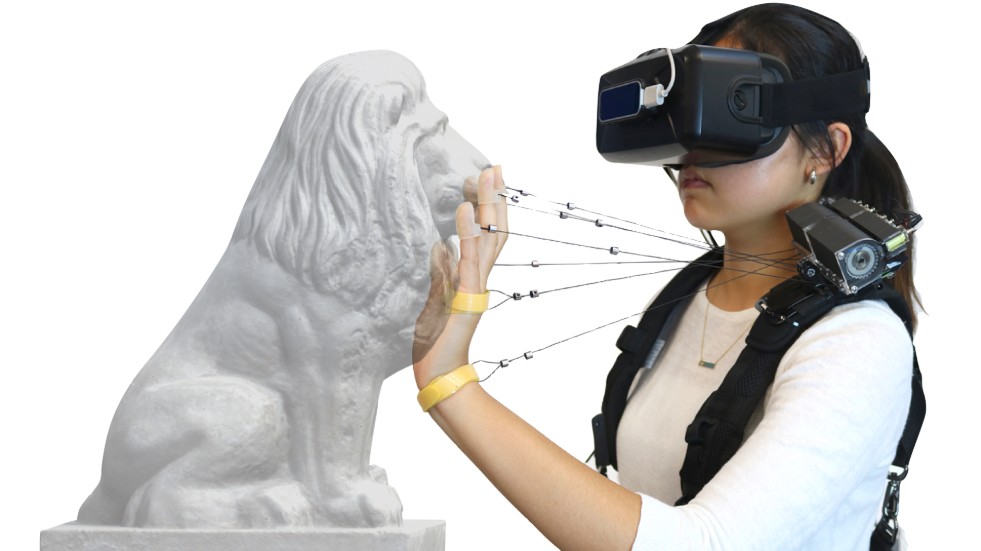Low Cost VR Haptics System ‘Wireality’ Transforms You into a Puppet
In a previous post, we outlined a comprehensive list of the top VR haptic implementations that are already in existence as well as the concepts and ideas that have been introduced over the past few years. Many of these are prototypes while some have gone the whole hog and have been implemented into usable products. The latest haptic implementation to be released is Wireality which as we shall see, is a very unique low-cost haptic system.
Wireality was first unveiled early this month by researchers from the Carnegie Mellon University and from the Future Interfaces Group. The haptic system attached spring-loaded cables onto the user’s fingers almost like a puppet. The haptic device is connected to a shoulder-mounted device and works with any particular virtual reality world to perceive when the user’s hand is just about to “touch” a virtual object and it stops the user’s fingers in the relevant position.
The haptic devices aim to provide users with an illusion of resting their hands on walls or wrapping their fingers around railings. It offers virtual haptic sensations as almost through puppetry.
According to the researchers, the Wireality approach offers plenty of benefits to users. It locks the user’s fingers in place when they are touching virtual objects in the immersive environment but it does not need any power to keep the hands locked in that position. According to the researchers, the haptic device utilizes just 0.024 mWh per actuation.
The haptic device is also very low cost. The whole system was made with just $35 worth of components. This is extremely cheap by haptic technology standards. Most of the haptic products and prototypes cost thousands of dollars.
In spite of its clever construction, Wireality still faces a number of hurdles. At the moment, the biggest hurdle to the realization of consumer VR haptics is the simplicity and accessibility of the implementation. The Wireality hooks multiple cables to the user’s digits and then mounts the device to the user’s shoulder. This before they even put on the headset. This is a cumbersome implementation that will also restrict the ease with which a user can move their hands about in virtual reality. Currently, users are simply unwilling to trade-off ease of movement in virtual reality just to have some rudimentary haptic sensation. At the moment, haptic sensations are not a major priority for most VR users.
The Wireality system also conveys the illusion of the user touching the surface to just a few parts of the user’s hands; if you use the haptic system to press your hand flat against a surface such as a wall, you will not get the haptic sensation for the most parts of your palms with the current startup. This will not be a realistic sensation of touch.
In spite of its weaknesses, Wireality is an important addition into the growing body of research into the realization of haptic sensations.


